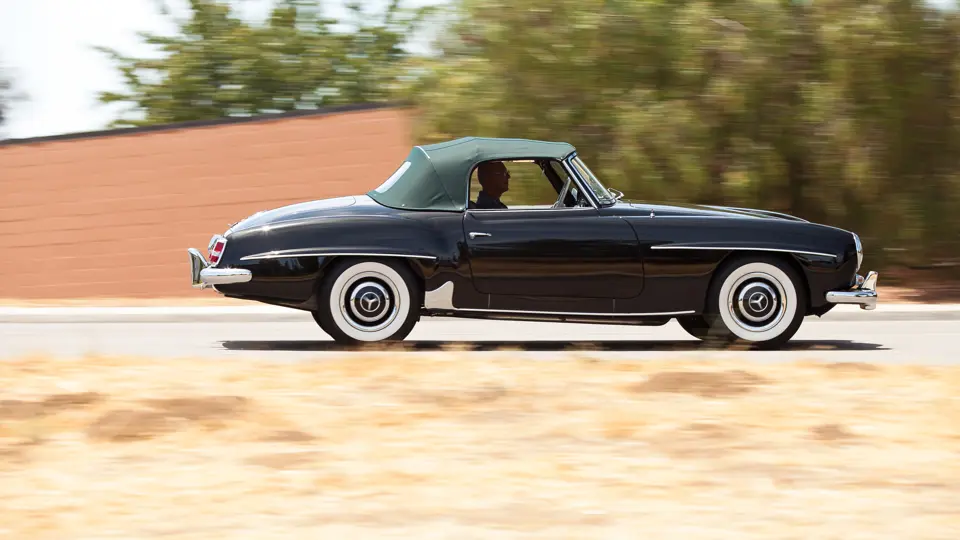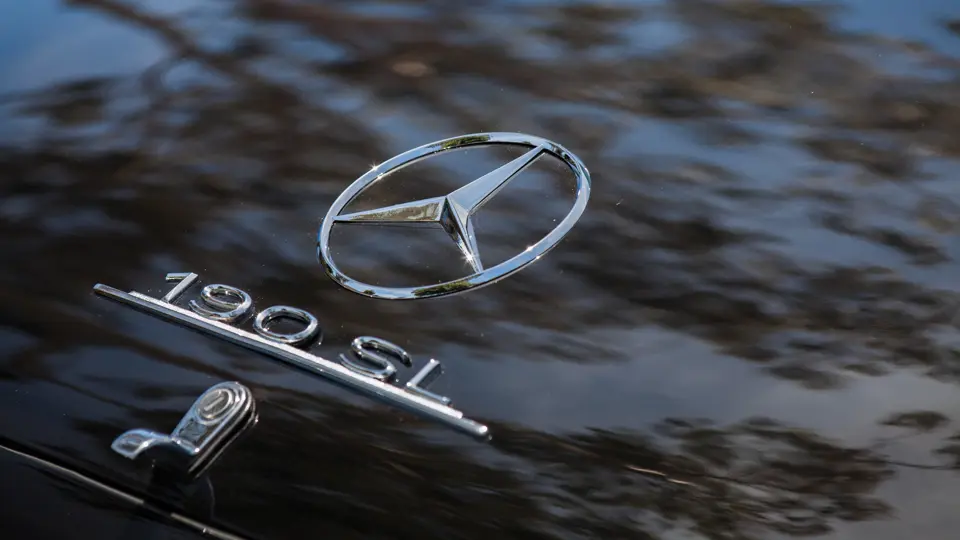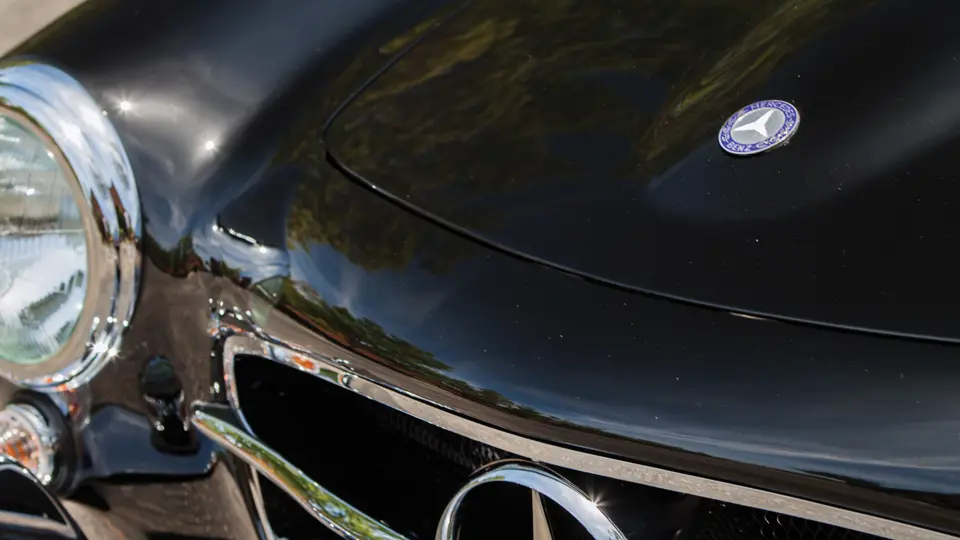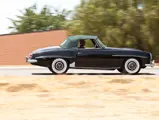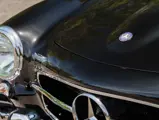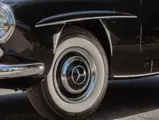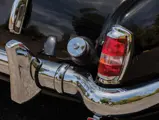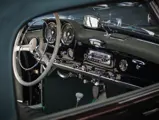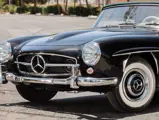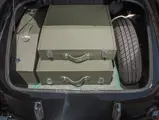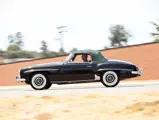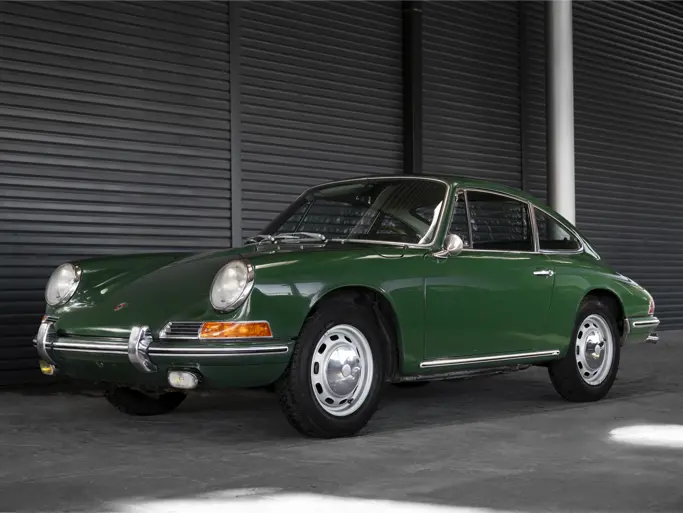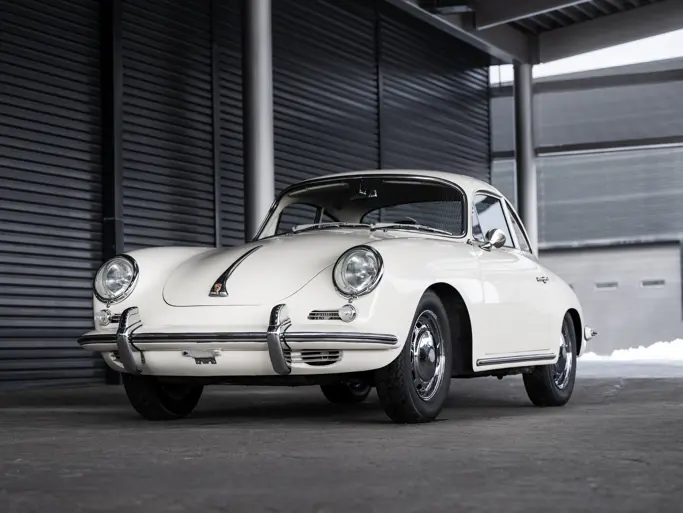105 hp, 1,897 cc OHV inline four-cylinder engine, four-speed manual transmission, independent front suspension with coil springs and wishbones, low-pivot swing axle rear suspension, and servo-assisted four-wheel drum brakes. Wheelbase: 94.5 in.
Despite wartime devastation, Daimler-Benz rebounded strongly by the mid-1950s, including a triumphant return to racing. Enter the brilliant high-performance 300 SL, the company’s first post-war sports car, and a two-seat boulevard cruiser, the 190 SL, which reached production in January 1955.
Like most sports cars of the time, the 190 SL had a more basic sedan to thank for its existence. In the case of the 190 SL, it was the W120 Series 180 that was introduced in 1953 and commonly known as the “Pontoon” sedan. The 190 SL, known internally as the W121, used a shortened version of the W120 platform that was topped by the unique roadster body shell. It shared the 180’s all-independent, coil-spring suspension, including the swing axles, which provided considerable flexibility during aggressive cornering.
Power was supplied by a new 105-horsepower, 1.9-liter, four-cylinder engine, initially with twin Solex carburetors. The transmission was a floor-mounted, four-speed manual, and the car’s stopping power was provided by four-wheel drum brakes. Styling was intentionally similar to its 300 SL sibling, most notably the rounded overall lines, low nose, and wide grille with the Mercedes-Benz three-pointed star, causing no one to mistake this for any other vehicle. Shortly after production began, a removable hardtop became available, then a fixed-head coupe. Luggage space is provided by a comparatively large trunk and a roomy interior, a benefit of its sports tourer yet still practical status in the Mercedes-Benz hierarchy.
Perhaps best of all, the 190 SL was available in the $4000–$5000 range; this was less than half the cost of the 300 SL, which easily eclipsed $10,000. Further proving the success of the 190 SL was the fact that very few changes were made during it eight-year production life. The drivetrain remained untouched, save for a bump in compression ratio to 5.8:1 in 1959. The coupe received a larger rear window and the roadster offered a removable hardtop roof, which were both adopted the same year. Mercedes-Benz built 25,881 units, which was considered a commercial success, as it prompted the development of the 230/250/280 SL Roadster that followed.
This lovely 190 SL, finished in its striking original color combination of black (DB040) over dark green leather, was fully restored, with no expense spared, in Germany. It is equipped with the optional hardtop, its matching dark green leather luggage, and owner’s booklets and tools, and while the car was being restored, the original engine was rebuilt to factory specification.
With its rapidly appreciating value, the 190 SL has benefited accordingly but still provides a more affordable alternative to its pricey stable mate. Now is the perfect time to purchase a prime example of this rising “three-pointed” star.




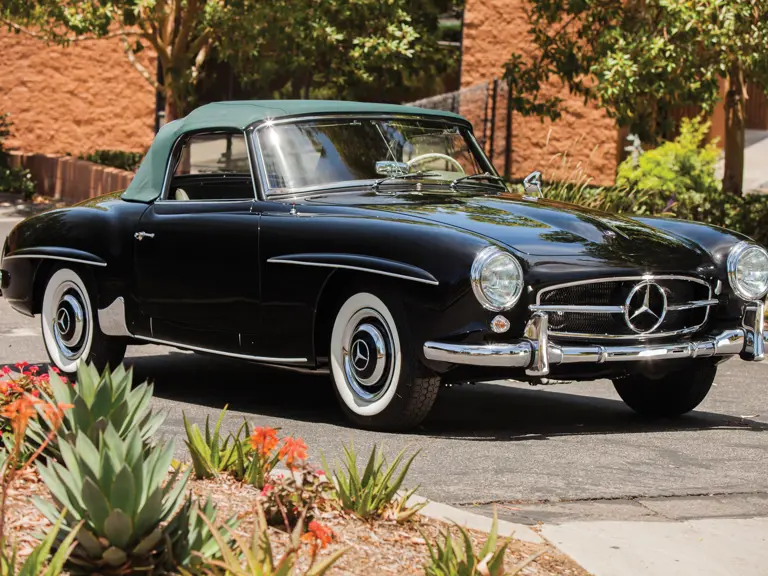
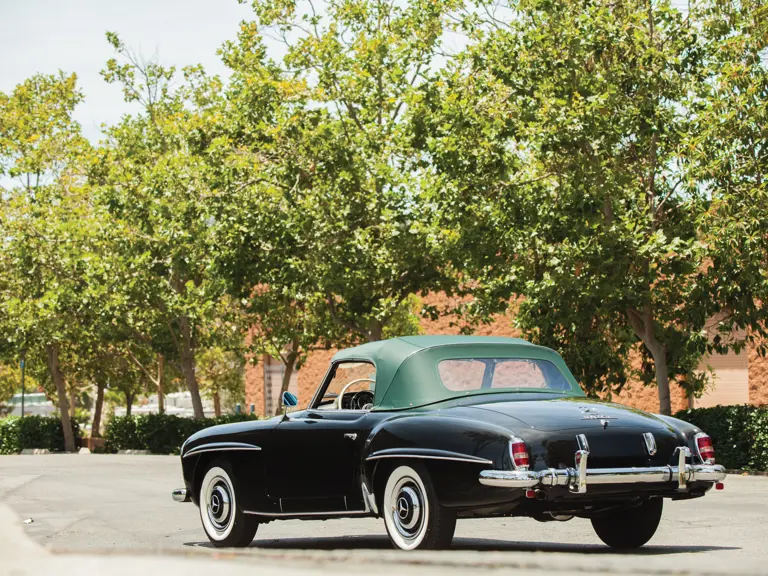
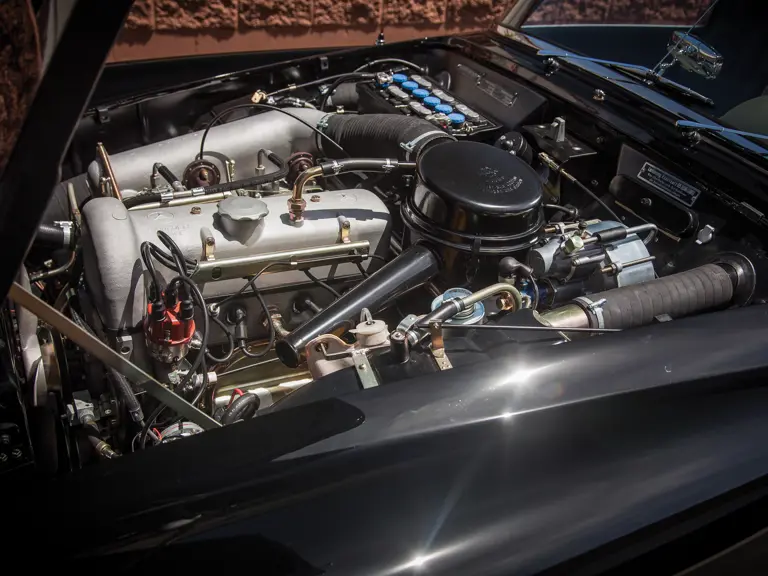
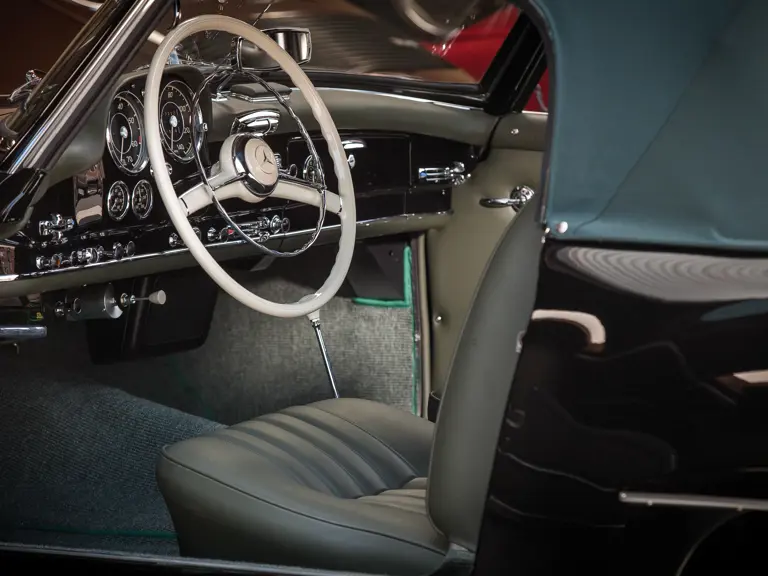
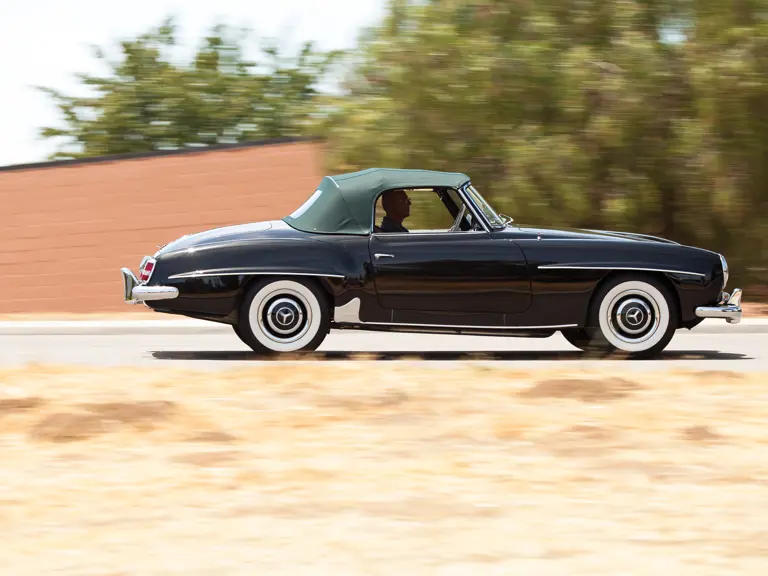
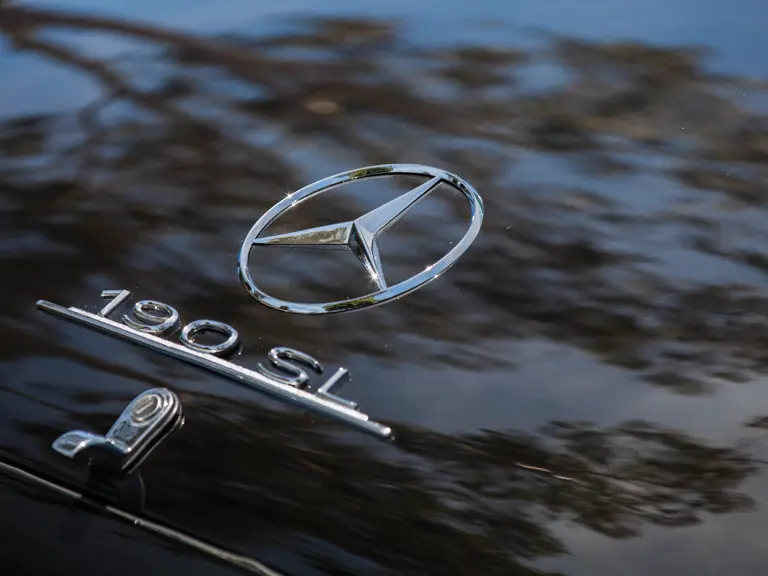
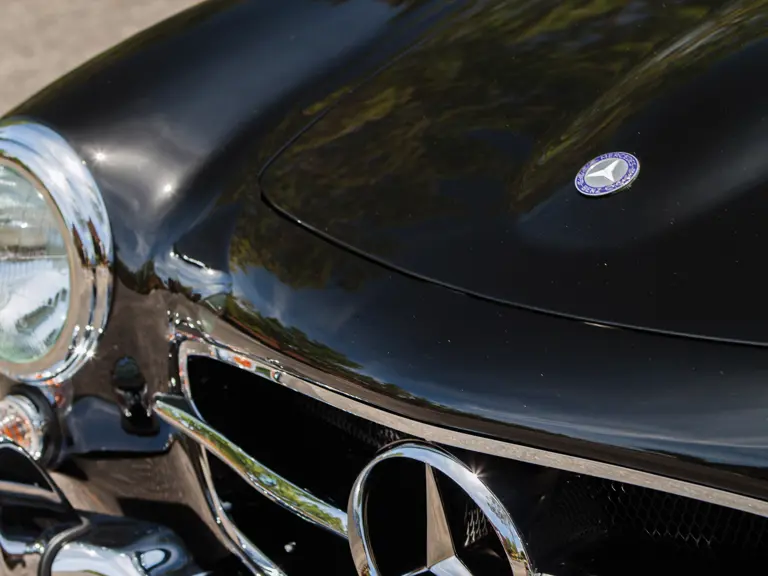
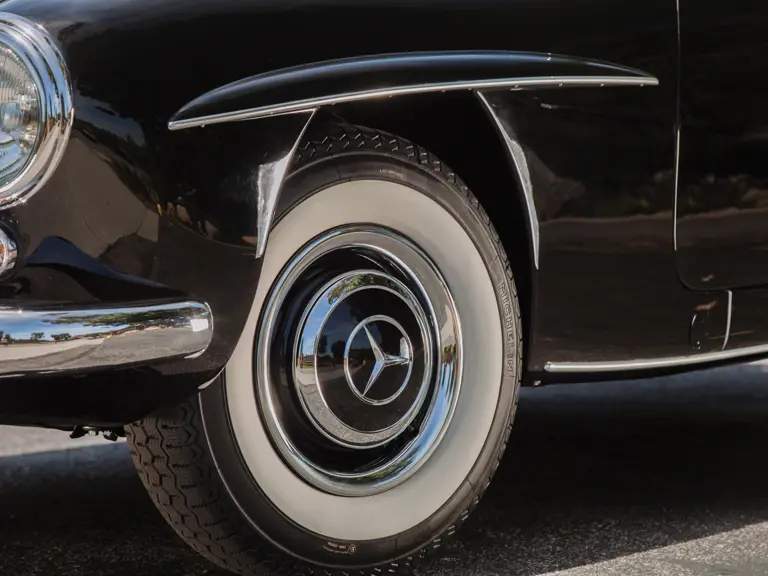
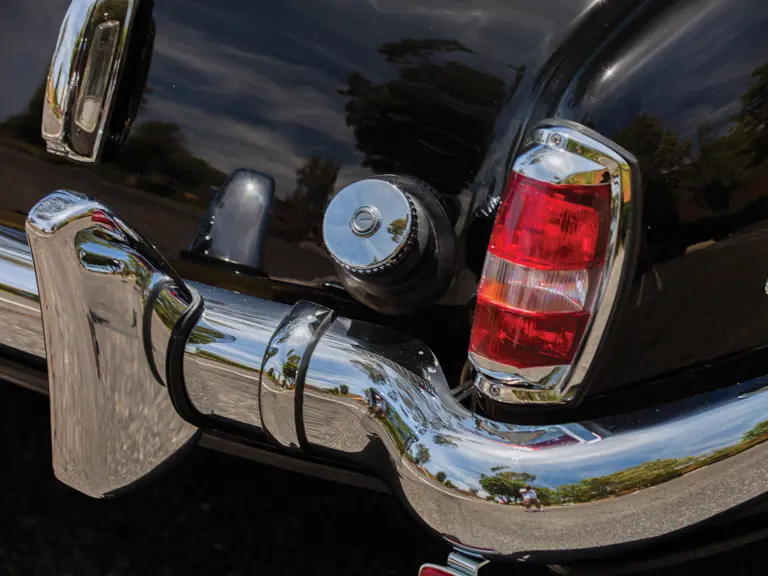
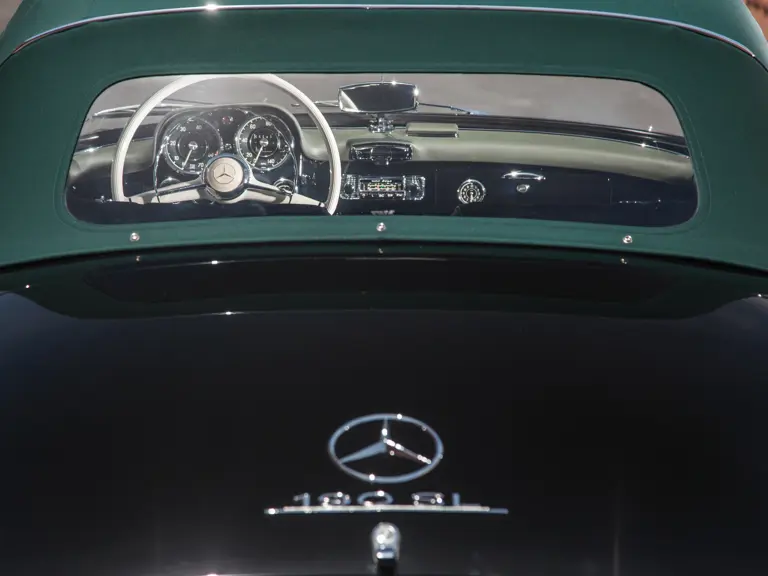
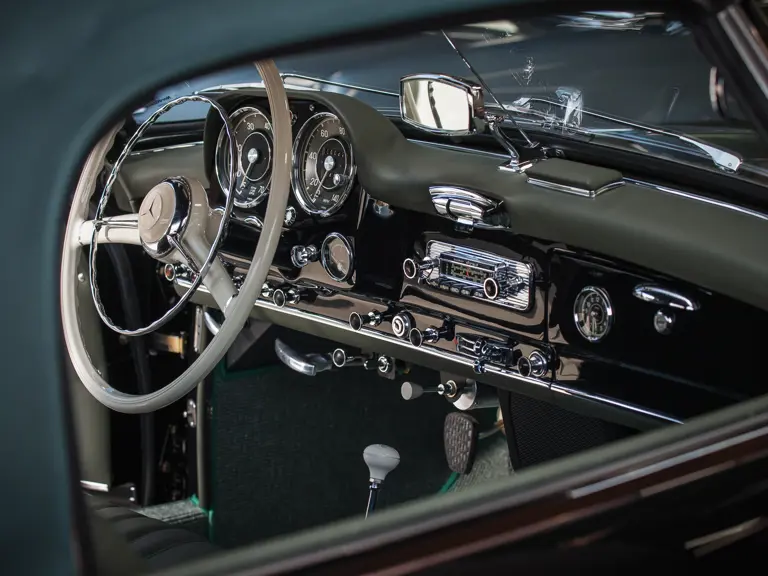

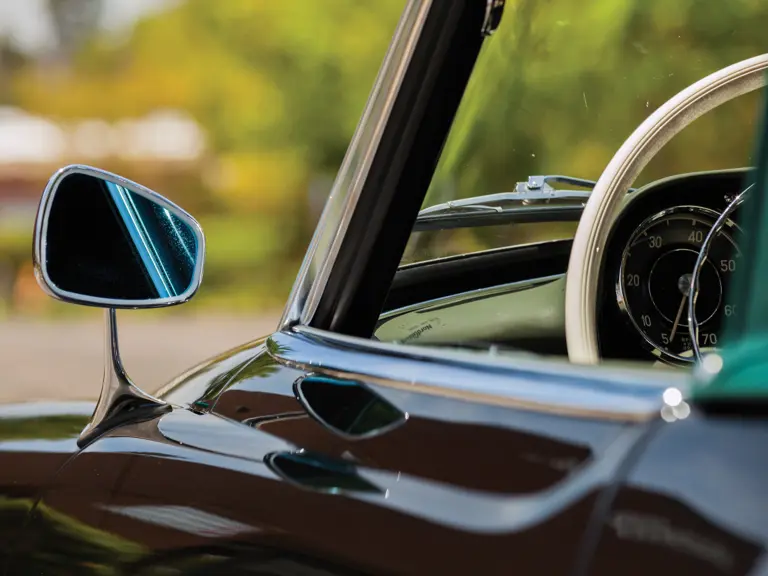
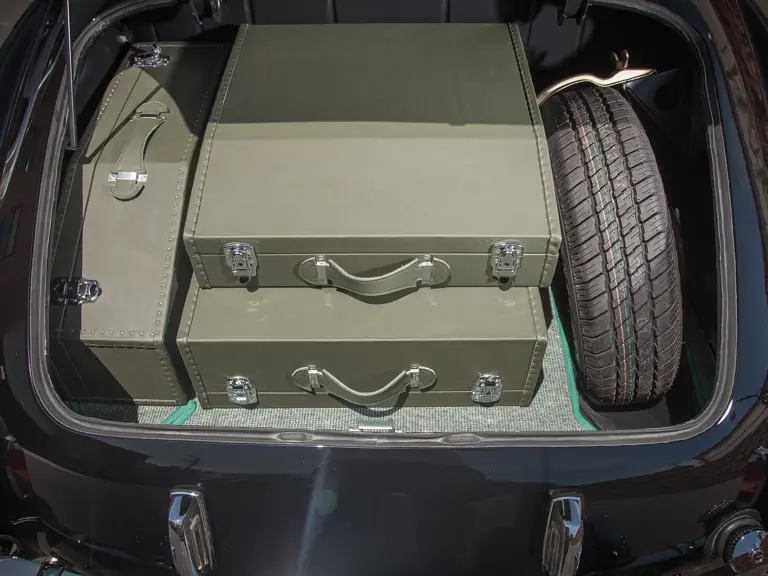
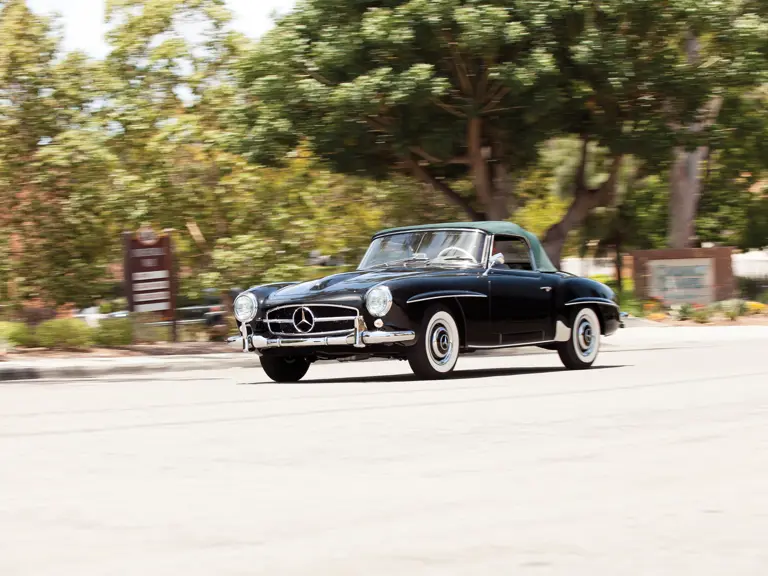
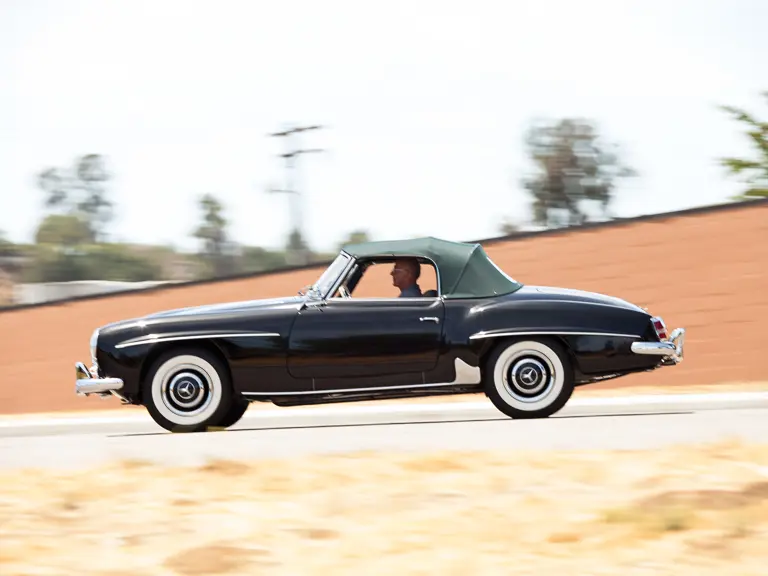
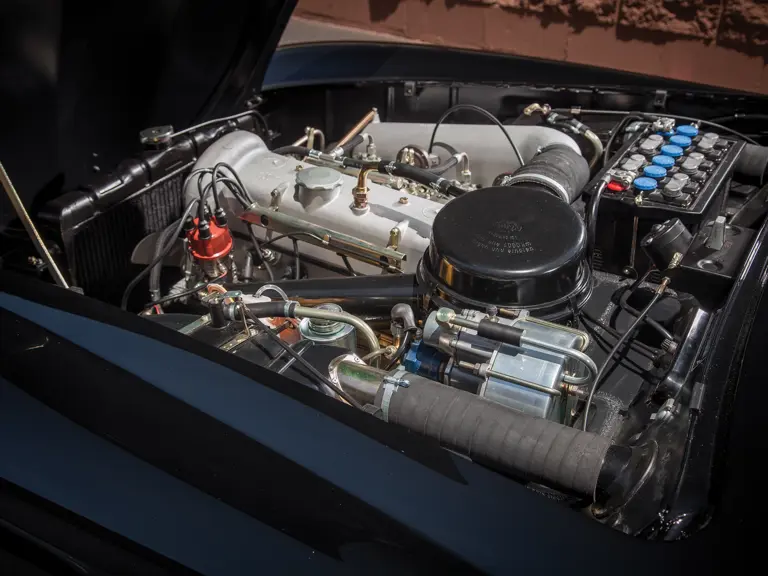
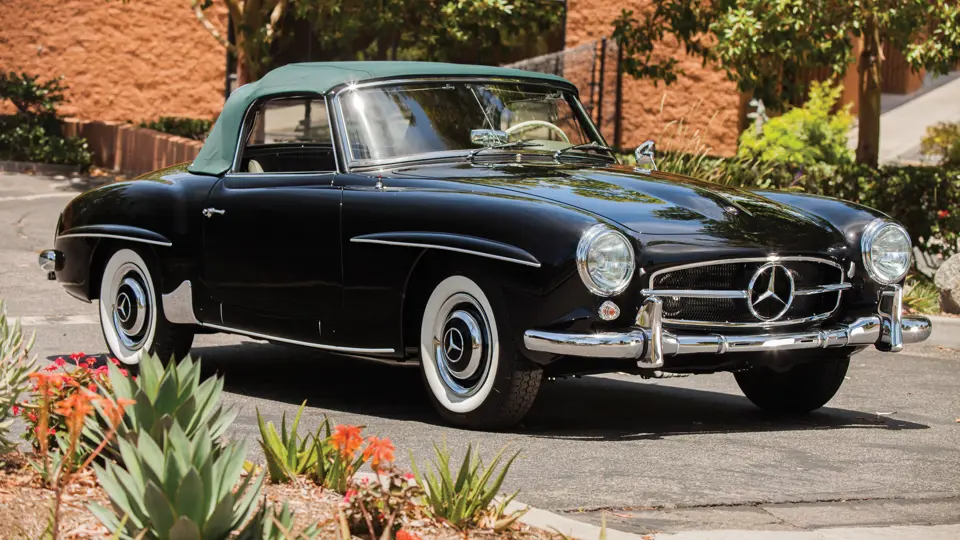
 | Monterey, California
| Monterey, California
